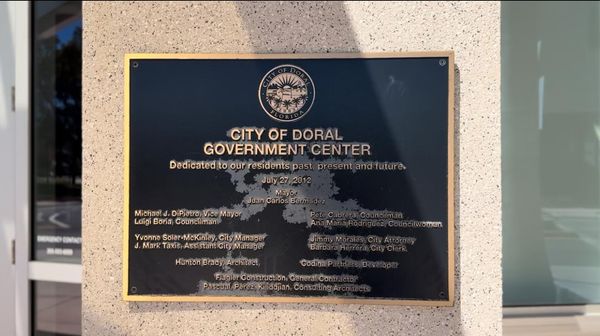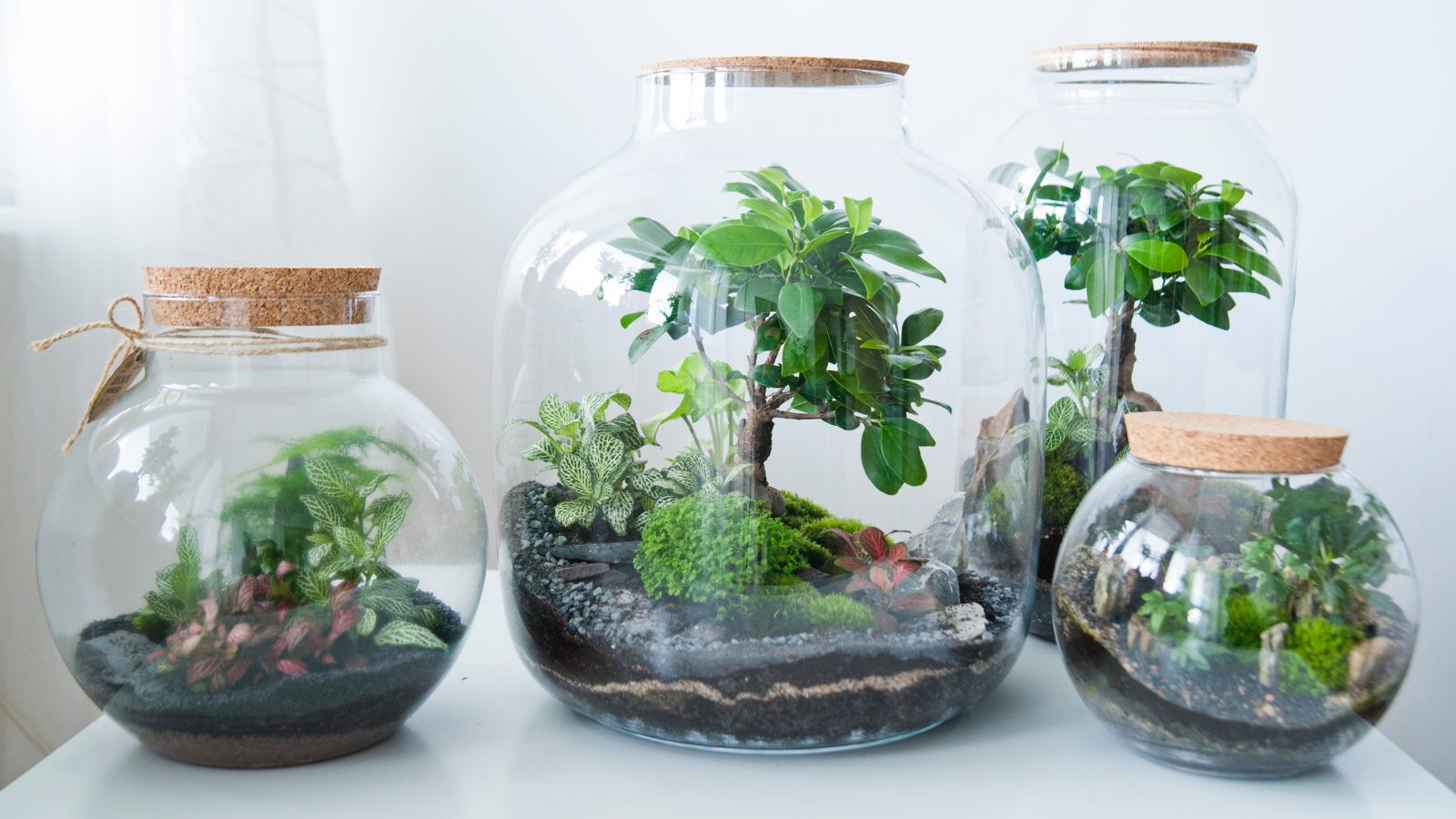
Terrariums are perfect for low-maintenance greenery. With a little planning, a terrarium can become a self-sustaining environment that you never need to water or maintain.
However, terrariums are their own microclimates, and these can be a delicate balance. Keeping a terrarium in the wrong spot can throw off its temperature and moisture, harming or even killing your plants.
I spoke to two terrarium experts about where to place a terrarium – for both plant health and interior design.
Know your window directions
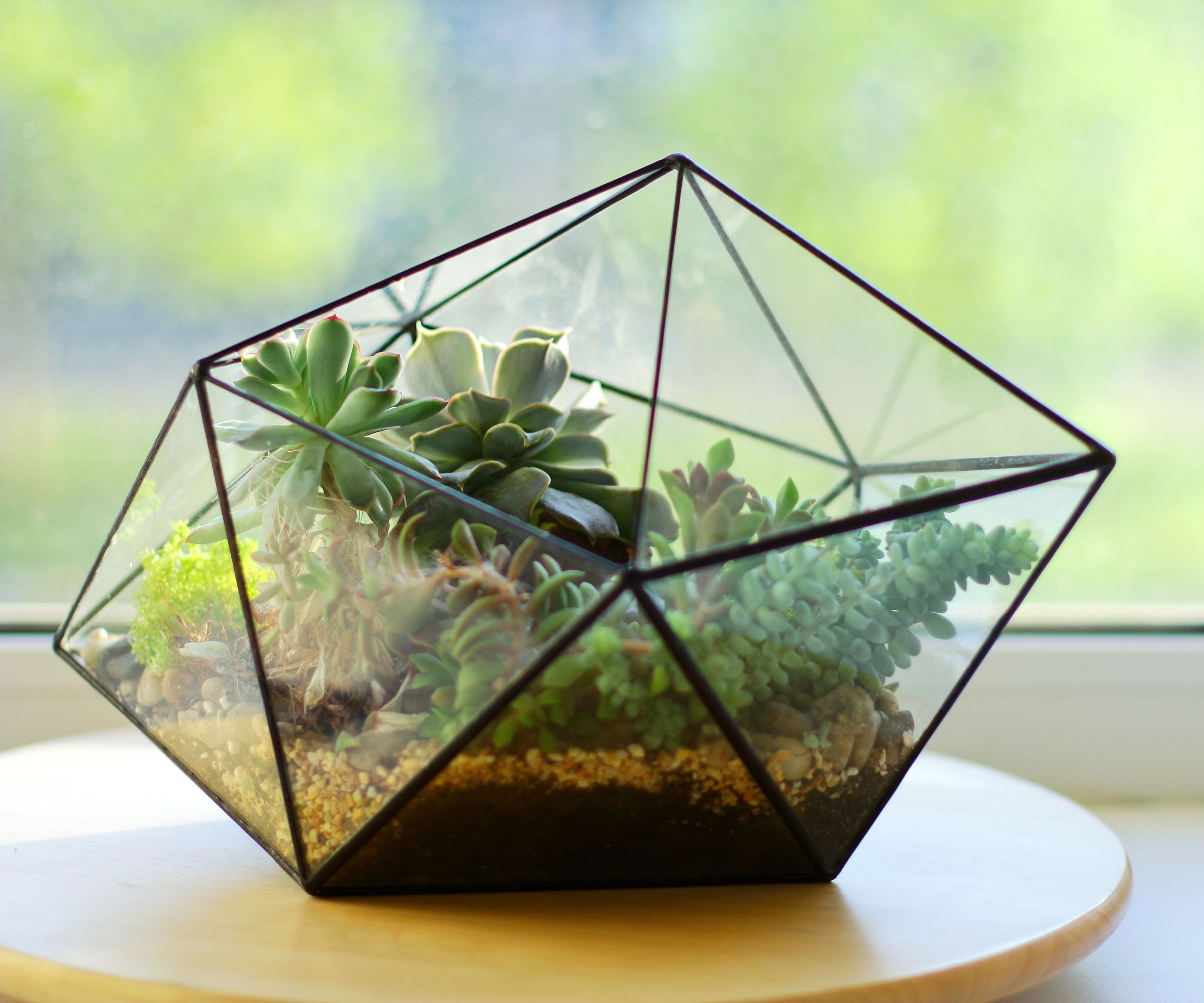
Before you do anything else, you need to make sure your windows are in the right place for a healthy terrarium. Because terrariums are full of plants, it seems like you should place them by a window so that they get lots of light.
However, bright, direct sunlight can actually damage your terrarium plants. Light can refract through the panes of the terrarium and scorch the plants, and because terrariums are sealed, the heat of the sun can evaporate water from the surface of their leaves which is then trapped inside. This in turn creates condensation on the inside of the terrarium which can cause rot and disease in your plants.
That's why terrarium expert Dan Jones suggests 'North-facing windows are perfect, as they receive consistent indirect light throughout the day. East-facing is the next best, with just some stronger morning rays to contend with, then good for the rest of the day.'
However, you might need to make some adjustments if you have west-facing or south-facing windows. Dan says that 'West-facing windows can work, but there’s some strong direct sunlight for certain periods. South-facing is essentially full sun at the hottest times of the day, so that’s a definite problem.'
Terrarium expert Emma Sibley agrees, adding that 'Your terrarium will love a north-facing window but definitely steer clear of a south-facing window. Even the direct winter sun can cause problems with the plants in your terrarium. If you notice that your plants start to lose their color and wilt, you may have put your terrarium in too much sun. '
Thankfully, there are a couple of solutions to this issue. Dan suggests 'If you must place terrariums in West or South-facing rooms, I’d recommend adding a screen to the window to filter the light, or at the very least, place your terrariums deep into the room away from the direct sunlight.'
1. On a bookshelf
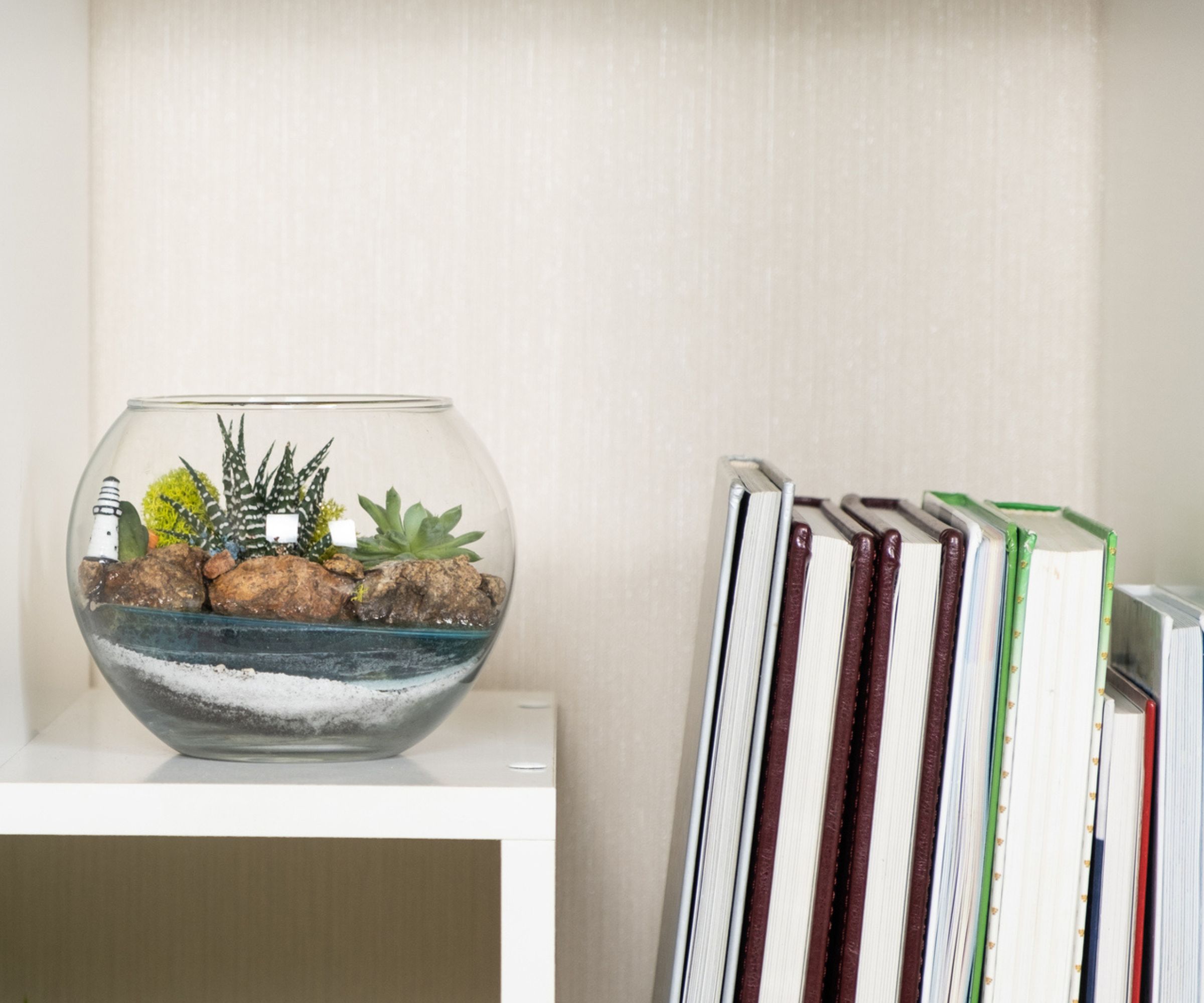
One of the best places for a terrarium is on a bookshelf. Shelves get a lot of indirect light, but they're usually shielded from direct sun.
Expert Emma Sibley says 'As long as your bookshelf is not too dark, they will make a perfect home for a terrarium. Terrariums look great as a set so think about grouping a few on a bookshelf surrounded by some other houseplants to compliment the glass.'
However, use small terrariums on bookshelves. Terrariums are surprisingly heavy; the weight of the glass panes, metal frame, soil, hardscape, and plants all add up.
Dan Jones warns that 'Bookshelves are one of our favorite places to put terrariums. Just make sure they’re strong enough, as terrariums can get quite heavy.'
The Sill's DIY terrarium kit has all you need to make your first terrarium: a potting mix, sand, a glass bowl, and a choice of cacti and succulents.
This unusual terrarium isn't topped with a cork, but a large glass ball, creating a more sculptural look.
A classic terrarium design, this low bulb is perfect for a bookshelf or bedside table.
2. In a kitchen
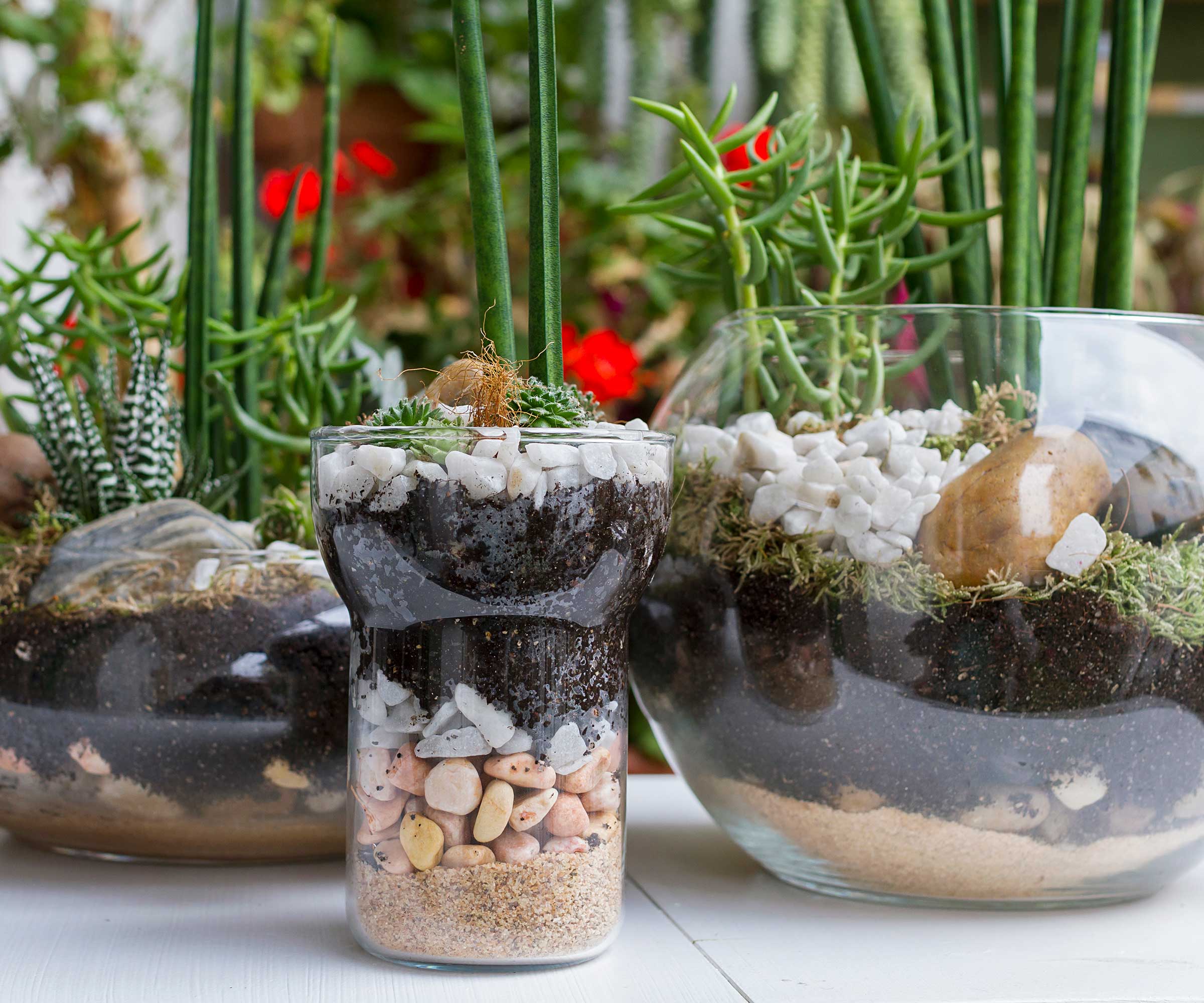
Kitchens are the perfect place for a terrarium, and they're a better option for a kitchen than most house plants. Emma Sibley explains that 'Most houseplants will struggle in a kitchen due to the steam and heat from cooking. But because the glass protects the plants, terrariums are a great way to bring a bit of nature into your kitchen space. Just keep the terrarium away from your oven or a south-facing window and the plants will be very happy. '
Dan Jones agrees and says 'There’s no reason not to keep a terrarium in the kitchen. Just be careful with the lighting and be sure not to place them in strong, direct sunlight. Unless it’s a succulent terrarium, in which case a windowsill with direct sunlight is perfect.
3. In a bathroom
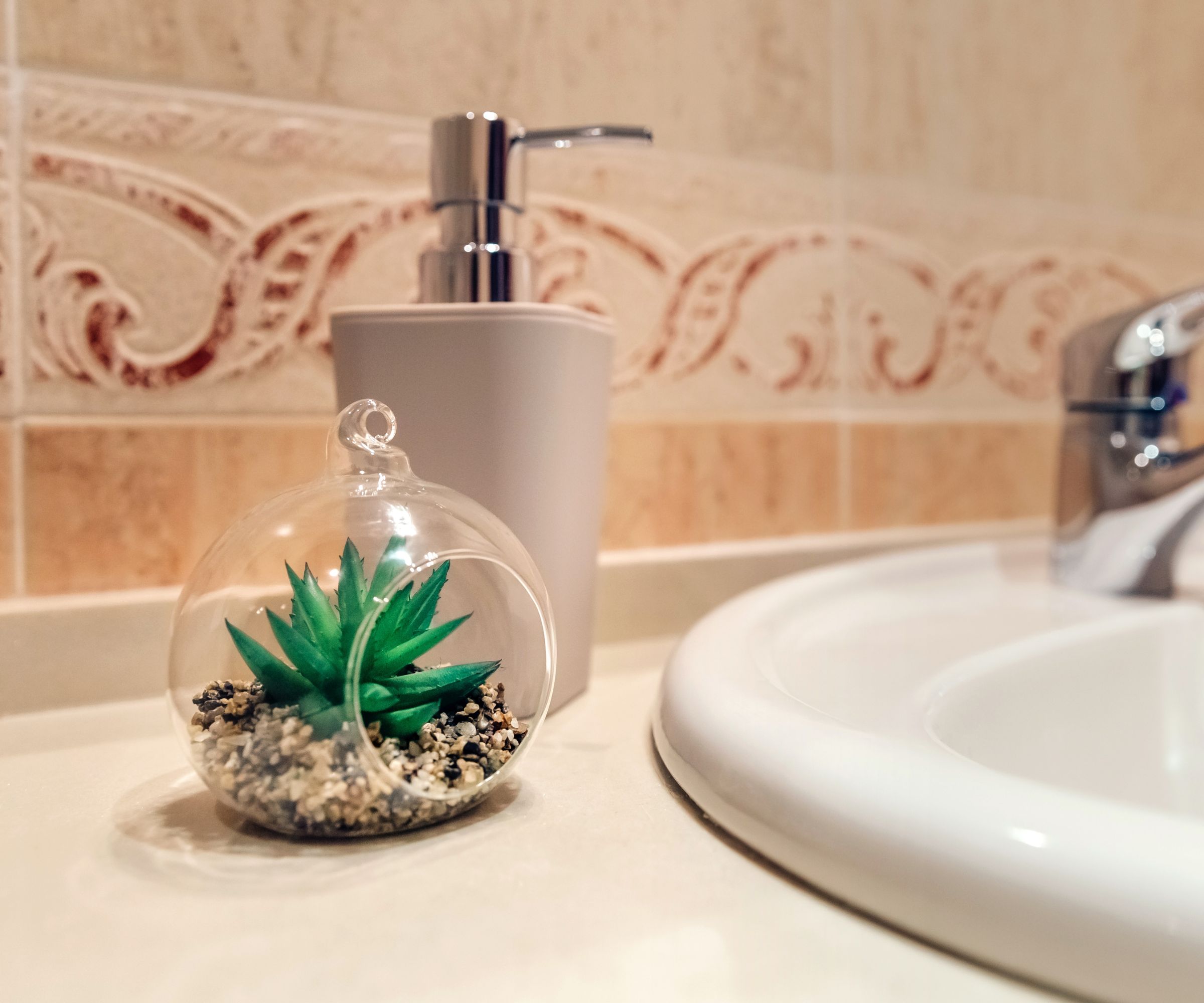
Terrariums can be a great addition to a bathroom, but you need to be careful. The humidity in a bathroom makes it seem like the perfect place for a terrarium. Calatheas, philodendrons, and anthuriums are perfect plants for bathrooms because they love the heat and moisture from showers. However, terrariums are usually sealed, so they can't benefit from this moisture.
On top of that, windowless bathrooms aren't always great spots for terrariums because the plants won't get any light. Dan Jones explains that 'Bathrooms typically have the poorest light in the home, and while tropical terrariums are typically full of shade-loving plants, they won’t thrive in full shade. If you’d like to make a terrarium for a dark bathroom, it’s worth optimizing for it and choosing the appropriate low-light plants.'
Terrariums are great for freshening up a bathroom, however, so ensure you pick plants that can thrive in low light. Pothos, arrowhead plants, or nerve plants are all good options for shady bathrooms.
4. In a bedroom
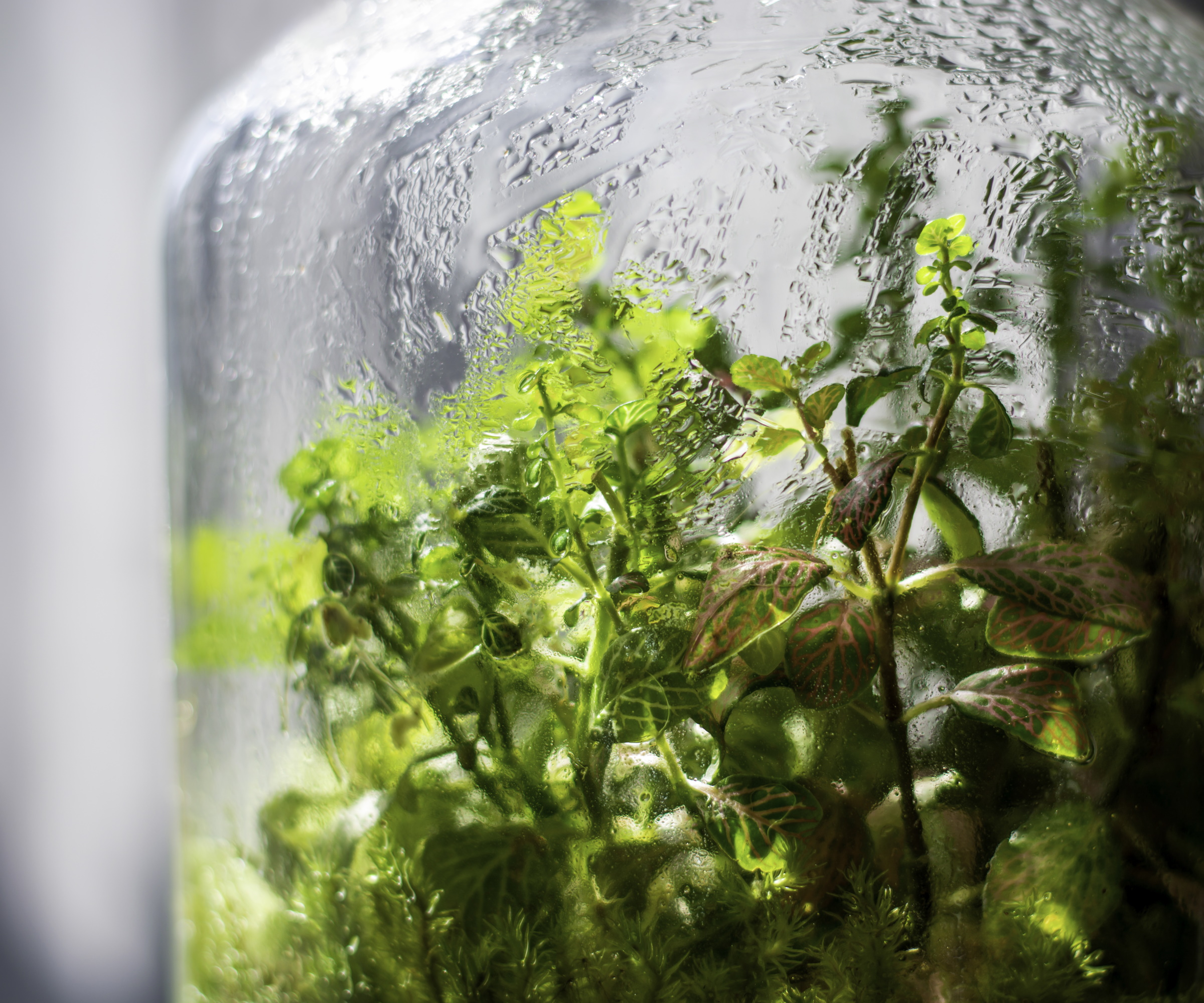
You can also consider putting a terrarium in a bedroom for low-maintenance greenery. Unlike other houseplants, you won't get the benefit of nice smells or air purification, but the trade-off here is that terrariums are easy to care for, so you don't need to remember to water them.
Emma Sibley says 'Bedrooms are great spaces for terrariums. They do not provide air purification as the plants are contained in the glass, but they are a great way to add some greenery to your bedroom. Style it on a bedside table to wake up with a mossy wonderland.'
Never put a terrarium in an entryway
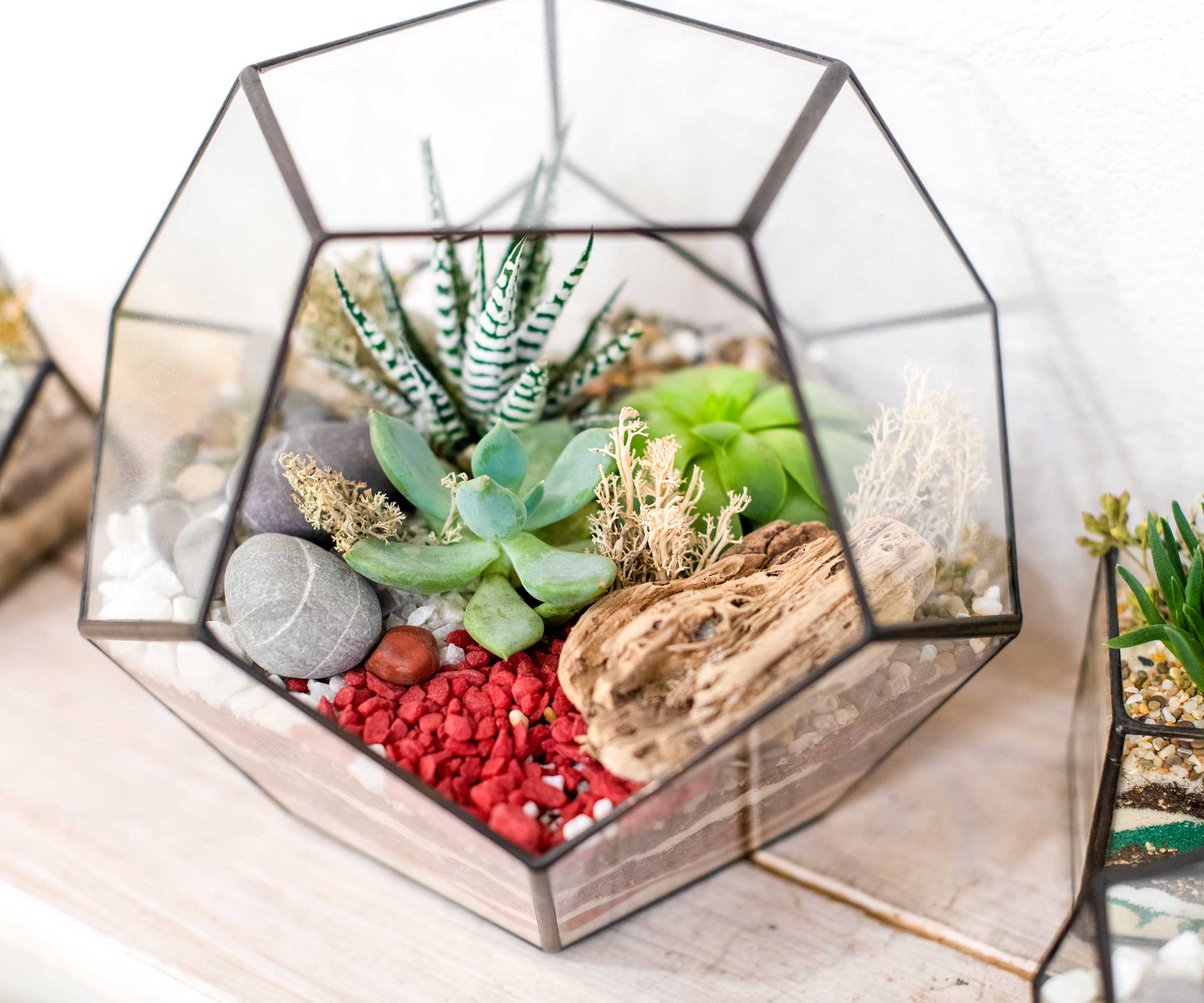
However, one of the worst places for a terrarium is an entryway. There are a couple of reasons for this.
Dan Jones explains that 'Cold draughts can cause issues for temperature-sensitive plants, so it’s best to keep terrariums away from entrances and open windows.' If you have a busy home with lots of people coming and going, the constant opening of the door makes it hard to maintain temperature, and this can harm the plants in the terrarium.
Entryways in older homes, especially Victorian homes, can also be quite dark, low light can be harmful to plants in terrariums. Emma Sibley says 'As long as the entryway isn’t too dark then it may work. However, terrariums need natural light so if there is not enough light you may see the plants start to die back.'
Avoid air ducts or radiators
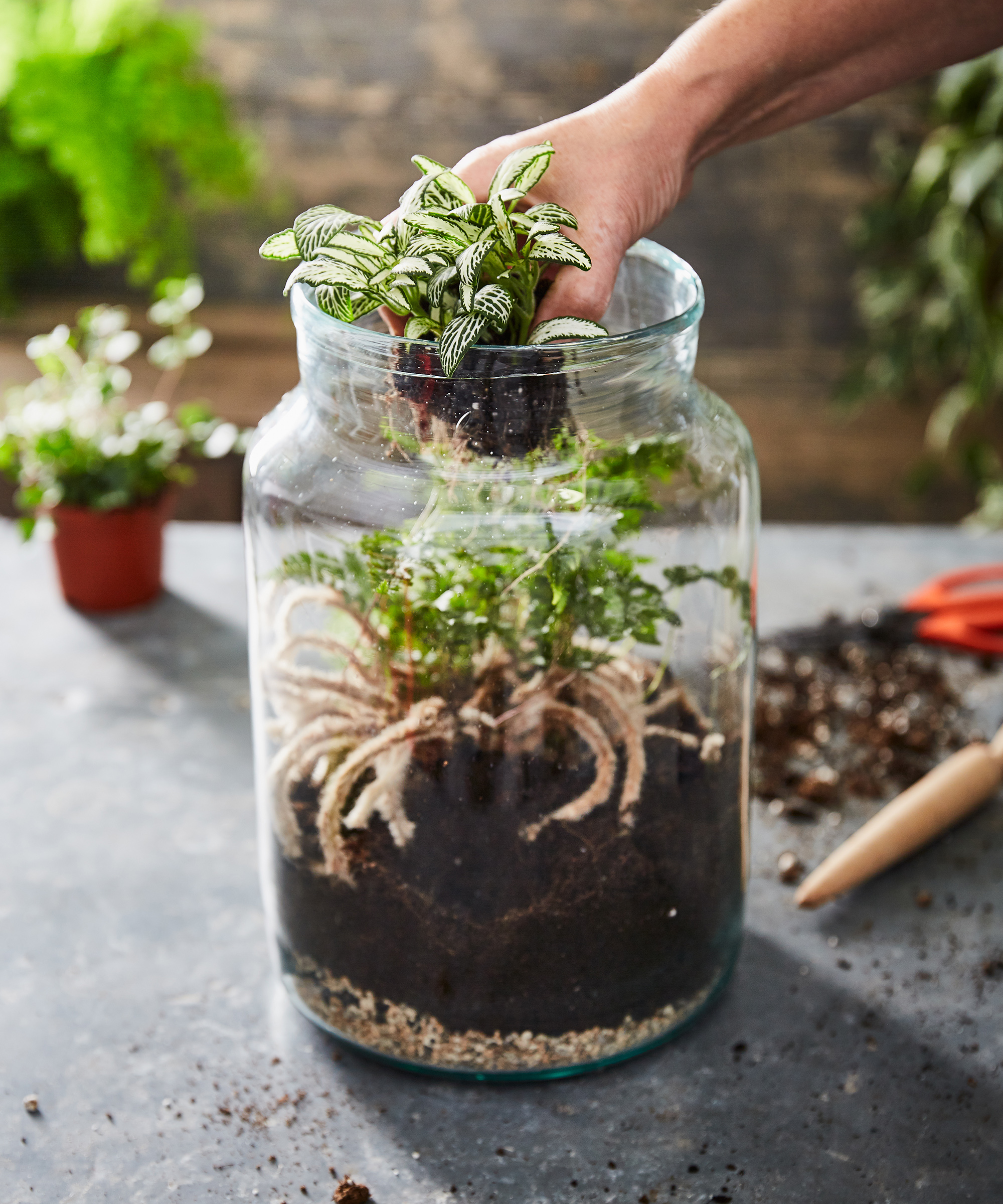
Finally, make sure you keep terrariums away from heat ducts, radiators, and heated floors. The heat can be harmful to the plants. Dan Jones explains that 'Placing terrariums near radiators is typically okay (many common terrarium plants will appreciate the warmth), but I’d avoid placing them directly on top or next to radiators.'
The heat won't directly damage your plants but it affects the terrarium microclimate. Dan says 'Though the heat is pretty unlikely to damage your plants directly, localized spikes in temperature can upset the delicate balance. You don’t want to dry out sections of your terrarium by forcing the moisture to evaporate from them.'
Emma Sibley agrees and says 'I always advise you to steer clear of any direct heat near your terrarium. Even though the bottles create their own microclimate, the plants will be affected by the direct heat and you may see them start to wilt, so avoid placing them near a hot radiator or on a heated floor.'
But before you place your terrarium, you need to fill it with the right plants. Learning the 10 best terrarium plants will make it much easier to create your own terrarium and ensure it works for your space.
